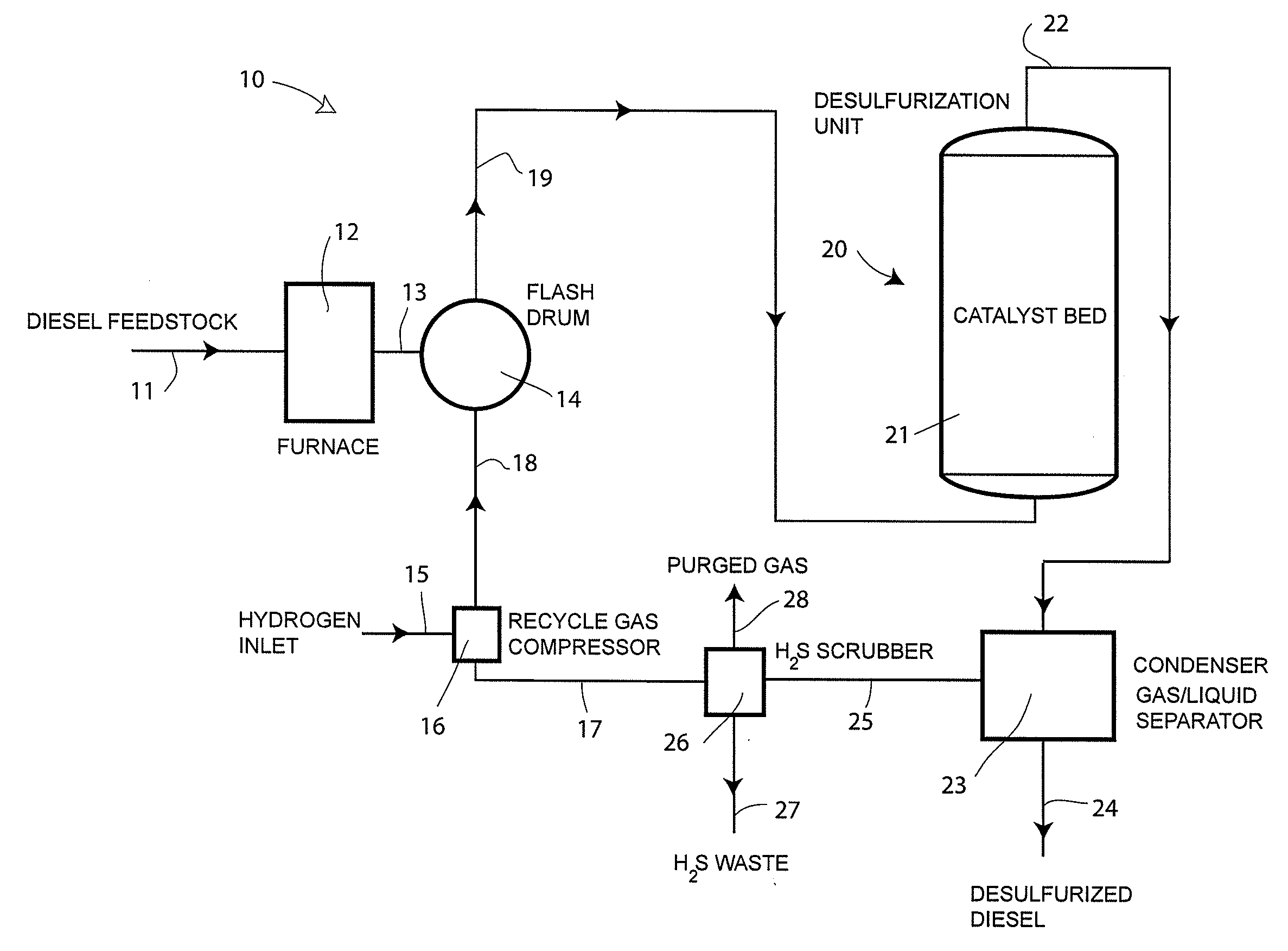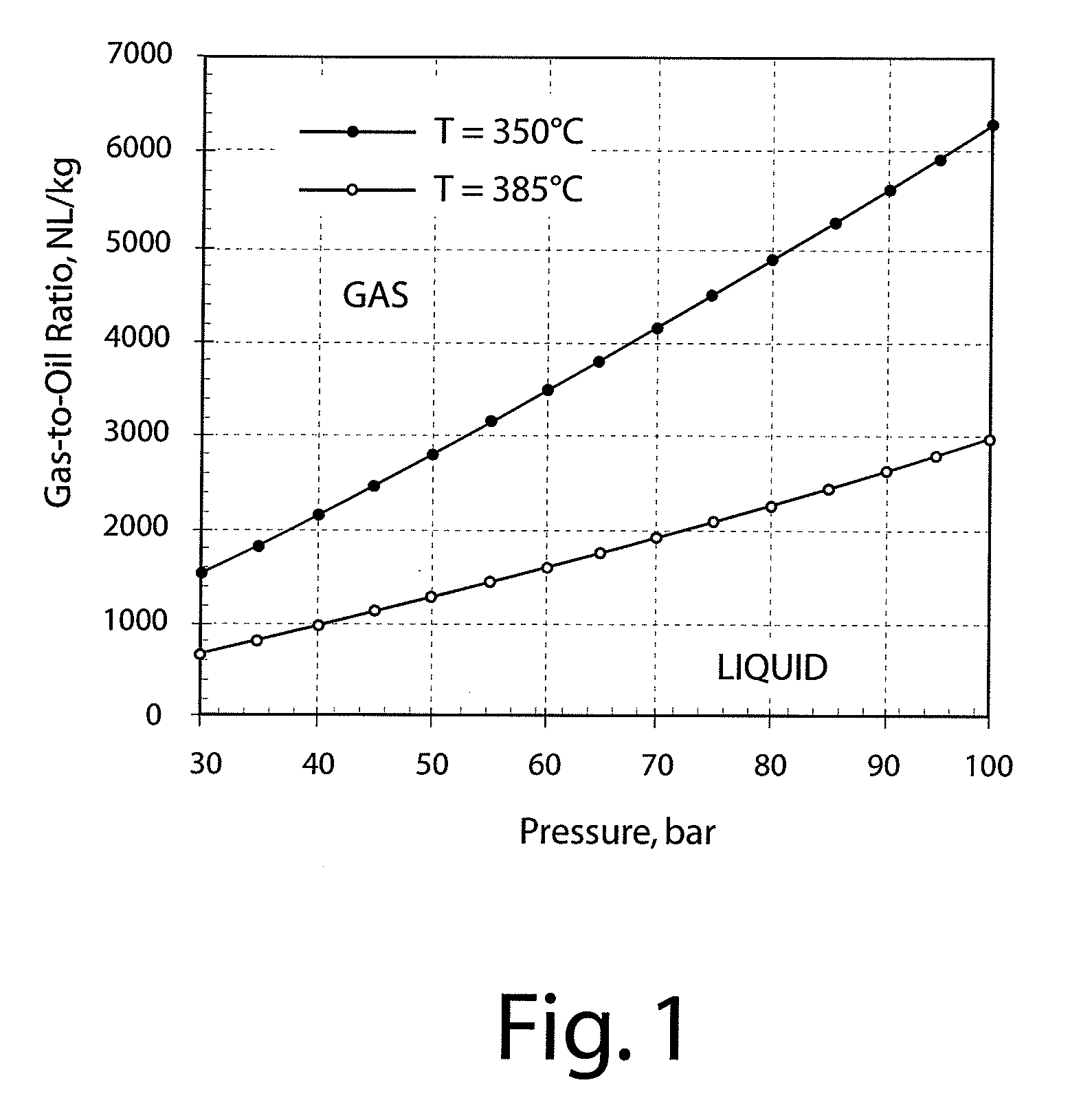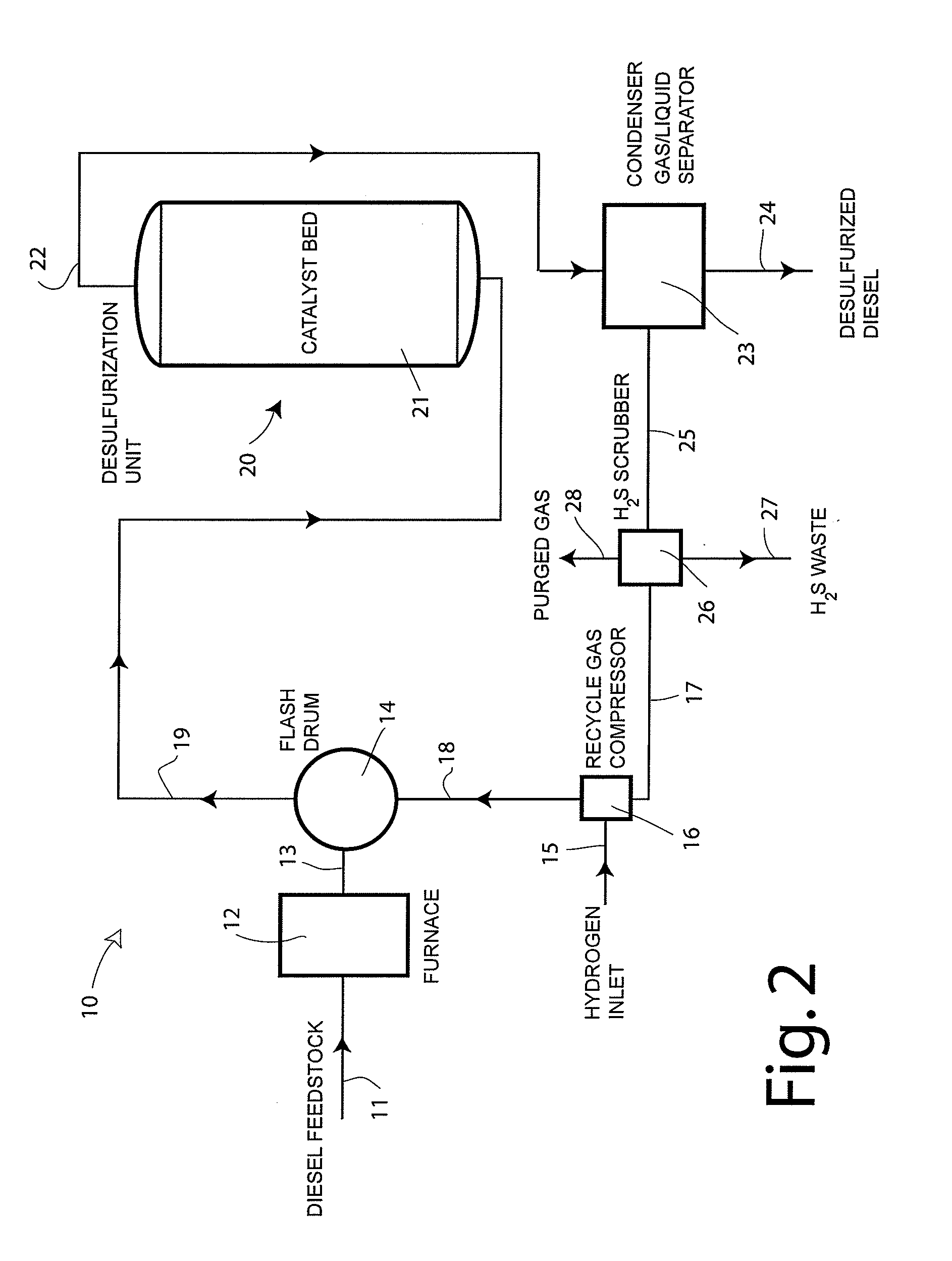Gas-phase hydrotreating of middle-distillates hydrocarbon feedstocks
a technology of gas-phase hydrotreating and feedstocks, which is applied in the direction of aromatic hydrocarbon hydrogenation, separation processes, chemical/physical/physicochemical processes, etc., can solve the problems of incomplete catalyst utilization, high cost, and inability to achieve purity improvement, so as to maximize catalyst utilization, enhance hydrotreating reactions, and maximize cell-per-square-inch density
- Summary
- Abstract
- Description
- Claims
- Application Information
AI Technical Summary
Benefits of technology
Problems solved by technology
Method used
Image
Examples
example 1
[0063]The experiments in this Example were conducted in a pilot plant (pilot plant PP19 of the National Centre for Upgrading Technology (NCUT), Alberta, Canada). The feed used was light cycle oil (from Petro-Can's Edmonton Refinery in Alberta, Canada) which had a density of 0.9338, total sulphur content of 1.12 wt % and total nitrogen content of 702 wppm. The catalyst used was a commercial NiMo / Al2O3 hydrotreating catalyst and 30 ml of the catalyst was packed in the reactor with a 1:1 volumetric ratio dilution of 0.2 mm glass beads. The main feed properties are listed in Table 1 below.
TABLE 1Properties of Petro-Can LCODensity (15° C.), g / ml0.9336Carbon, wt %88.24Hydrogen, wt %10.49Total sulphur, wppm11178Total nitrogen, wppm702.3SimDis (SimulatedDistillation), ° C.IBP (Initial Boiling Point)126.410 wt %225.930 wt %256.550 wt %288.670 wt %327.390 wt %375.1FBP (Final Boiling Point)439.9
[0064]The main objective of this Example was to prove the concept of the gas phase hydrotreating ope...
example 2
[0065]The experiments in this Example were also conducted in a pilot plant (NCUT's PP12). The feed used was light cycle oil (from Irving Oil), which had a density of 0.9708, total sulphur of 1.24 wt % and total nitrogen of 611 wppm. The catalyst used was a commercial NiMo / Al2O3 hydrotreating catalyst; 100 ml of catalyst was packed in the reactor with 1:1 volumetric ratio dilution of 0.2 mm glass beads. The main feed properties are listed in Table 3 below. The operating conditions were: temperature=380° C., pressure=70 bars, and LHSV velocity=1.0 / h. The gas / oil ratios ranged from 403 to 5054 NL / kg.
[0066]The sulphur and nitrogen conversion data are shown in Table 4 below and the corresponding plots are showing in FIGS. 8 and 9, respectively. It is observed that the sulphur and nitrogen conversion increases significantly when the gas / oil ratio increases from 403 NL / kg to 2522 NL / kg. After that, the sulphur conversion tended to reach a plateau with further increase in gas / oil ratio. The...
PUM
| Property | Measurement | Unit |
|---|---|---|
| boiling point | aaaaa | aaaaa |
| boiling point | aaaaa | aaaaa |
| temperature | aaaaa | aaaaa |
Abstract
Description
Claims
Application Information
 Login to View More
Login to View More - R&D
- Intellectual Property
- Life Sciences
- Materials
- Tech Scout
- Unparalleled Data Quality
- Higher Quality Content
- 60% Fewer Hallucinations
Browse by: Latest US Patents, China's latest patents, Technical Efficacy Thesaurus, Application Domain, Technology Topic, Popular Technical Reports.
© 2025 PatSnap. All rights reserved.Legal|Privacy policy|Modern Slavery Act Transparency Statement|Sitemap|About US| Contact US: help@patsnap.com



